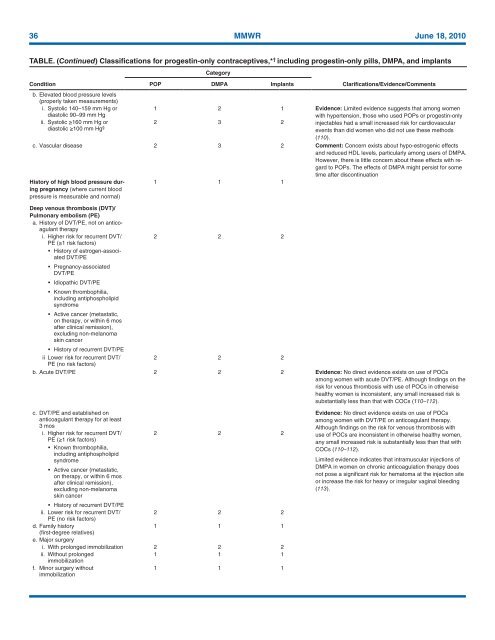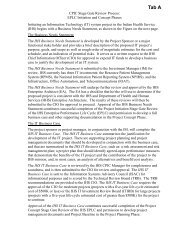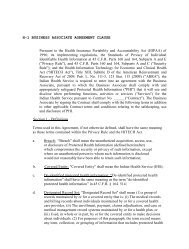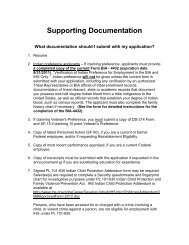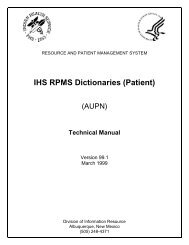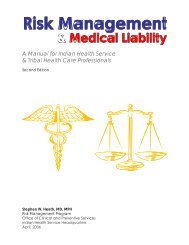CDC Article-US Medical Eligibility Criteria for Contraceptive Use, 2010
CDC Article-US Medical Eligibility Criteria for Contraceptive Use, 2010
CDC Article-US Medical Eligibility Criteria for Contraceptive Use, 2010
Create successful ePaper yourself
Turn your PDF publications into a flip-book with our unique Google optimized e-Paper software.
36 MMWR June 18, <strong>2010</strong><br />
TABLE. (Continued) Classifications <strong>for</strong> progestin-only contraceptives,* † including progestin-only pills, DMPA, and implants<br />
Condition<br />
b. Elevated blood pressure levels<br />
(properly taken measurements)<br />
i. Systolic 140–159 mm Hg or<br />
diastolic 90–99 mm Hg<br />
Category<br />
POP DMPA Implants<br />
Clarifications/Evidence/Comments<br />
1 2 1 Evidence: Limited evidence suggests that among women<br />
with hypertension, those who used POPs or progestin-only<br />
ii. Systolic ≥160 mm Hg or<br />
2 3 2<br />
diastolic ≥100 mm Hg §<br />
injectables had a small increased risk <strong>for</strong> cardiovascular<br />
events than did women who did not use these methods<br />
(110).<br />
c. Vascular disease 2 3 2 Comment: Concern exists about hypo-estrogenic effects<br />
and reduced HDL levels, particularly among users of DMPA.<br />
However, there is little concern about these effects with regard<br />
to POPs. The effects of DMPA might persist <strong>for</strong> some<br />
time after discontinuation<br />
History of high blood pressure during<br />
pregnancy (where current blood<br />
pressure is measurable and normal)<br />
1 1 1<br />
Deep venous thrombosis (DVT)/<br />
Pulmonary embolism (PE)<br />
a. History of DVT/PE, not on anticoagulant<br />
therapy<br />
i. Higher risk <strong>for</strong> recurrent DVT/<br />
2 2 2<br />
PE (≥1 risk factors)<br />
• History of estrogen-associated<br />
DVT/PE<br />
• Pregnancy-associated<br />
DVT/PE<br />
• Idiopathic DVT/PE<br />
• Known thrombophilia,<br />
including antiphospholipid<br />
syndrome<br />
• Active cancer (metastatic,<br />
on therapy, or within 6 mos<br />
after clinical remission),<br />
excluding non-melanoma<br />
skin cancer<br />
• History of recurrent DVT/PE<br />
ii Lower risk <strong>for</strong> recurrent DVT/<br />
2 2 2<br />
PE (no risk factors)<br />
b. Acute DVT/PE 2 2 2 Evidence: No direct evidence exists on use of POCs<br />
among women with acute DVT/PE. Although findings on the<br />
risk <strong>for</strong> venous thrombosis with use of POCs in otherwise<br />
healthy women is inconsistent, any small increased risk is<br />
substantially less than that with COCs (110–112).<br />
c. DVT/PE and established on<br />
anticoagulant therapy <strong>for</strong> at least<br />
3 mos<br />
i. Higher risk <strong>for</strong> recurrent DVT/<br />
2 2 2<br />
PE (≥1 risk factors)<br />
• Known thrombophilia,<br />
including antiphospholipid<br />
syndrome<br />
• Active cancer (metastatic,<br />
on therapy, or within 6 mos<br />
after clinical remission),<br />
excluding non-melanoma<br />
skin cancer<br />
• History of recurrent DVT/PE<br />
ii. Lower risk <strong>for</strong> recurrent DVT/<br />
2 2 2<br />
PE (no risk factors)<br />
d. Family history<br />
1 1 1<br />
(first-degree relatives)<br />
e. Major surgery<br />
i. With prolonged immobilization 2 2 2<br />
ii. Without prolonged<br />
1 1 1<br />
immobilization<br />
f. Minor surgery without<br />
1 1 1<br />
immobilization<br />
Evidence: No direct evidence exists on use of POCs<br />
among women with DVT/PE on anticoagulant therapy.<br />
Although findings on the risk <strong>for</strong> venous thrombosis with<br />
use of POCs are inconsistent in otherwise healthy women,<br />
any small increased risk is substantially less than that with<br />
COCs (110–112).<br />
Limited evidence indicates that intramuscular injections of<br />
DMPA in women on chronic anticoagulation therapy does<br />
not pose a significant risk <strong>for</strong> hematoma at the injection site<br />
or increase the risk <strong>for</strong> heavy or irregular vaginal bleeding<br />
(113).


